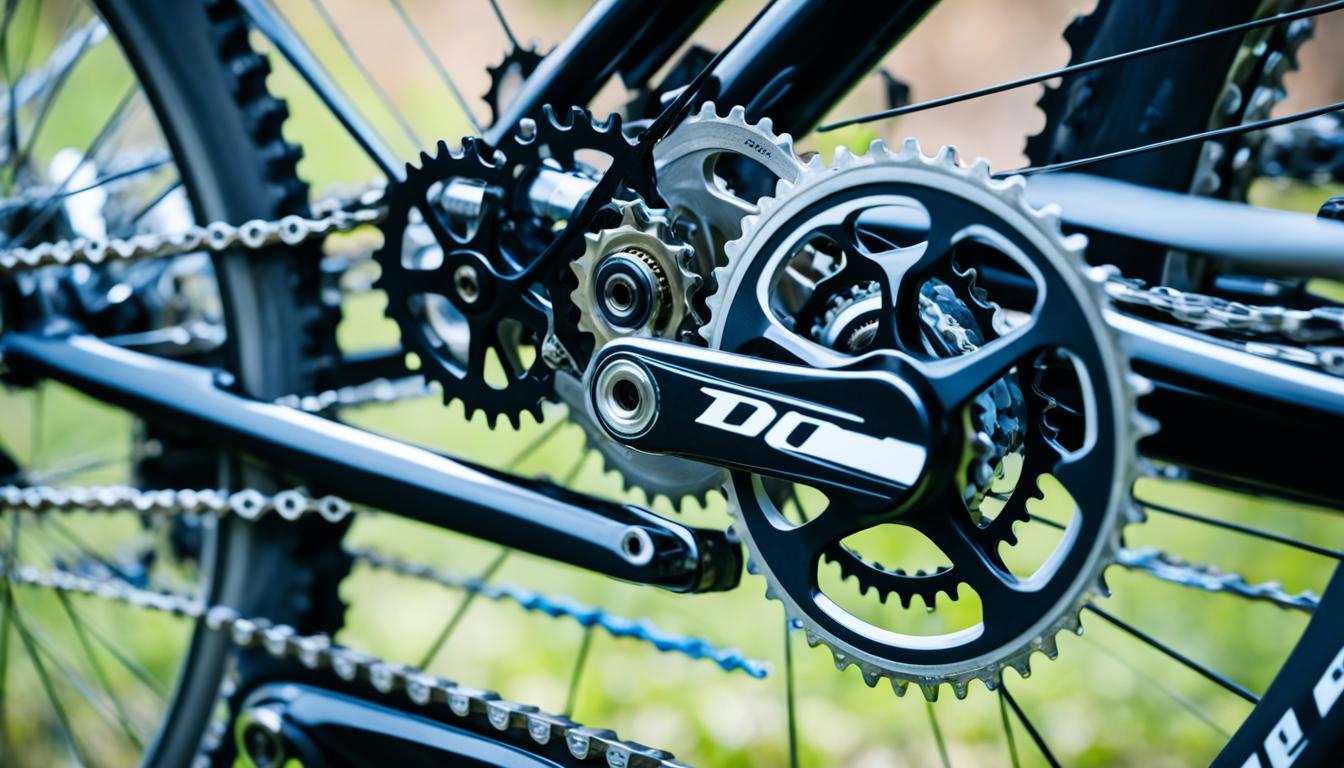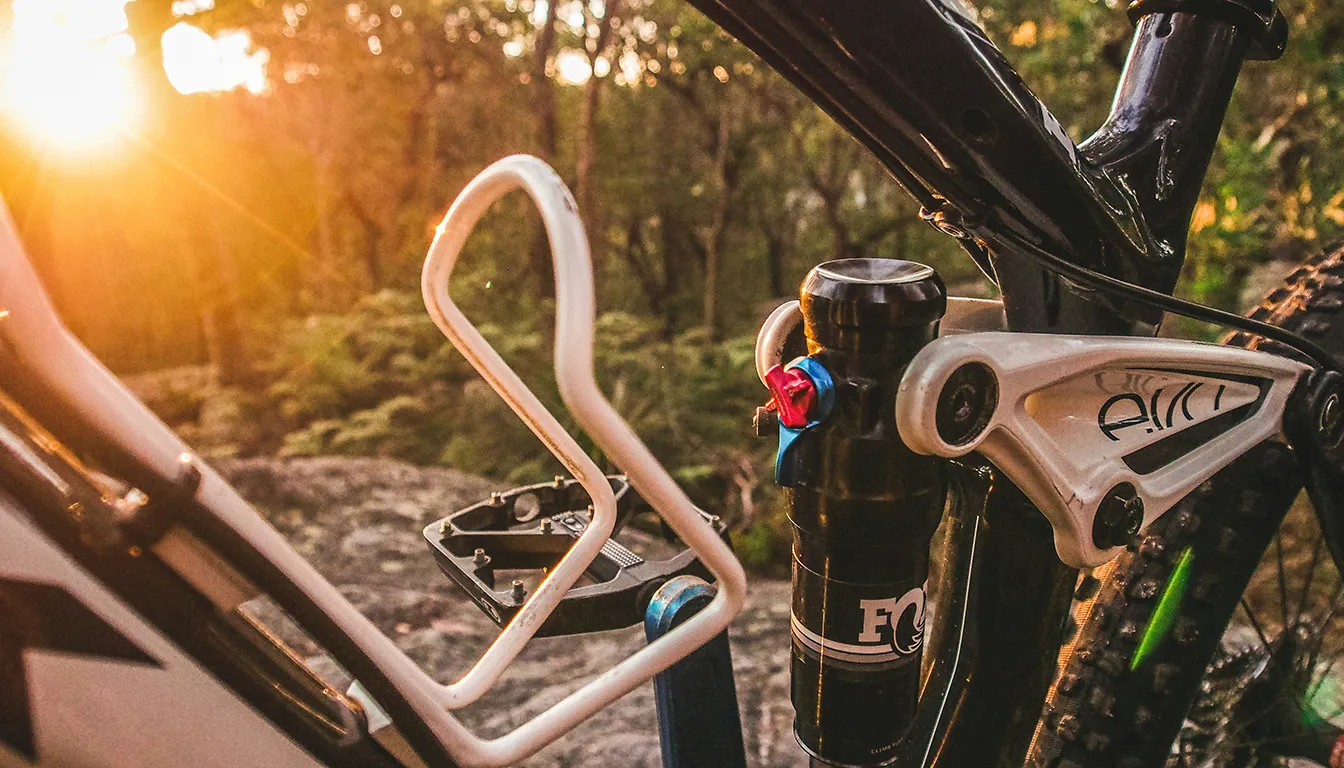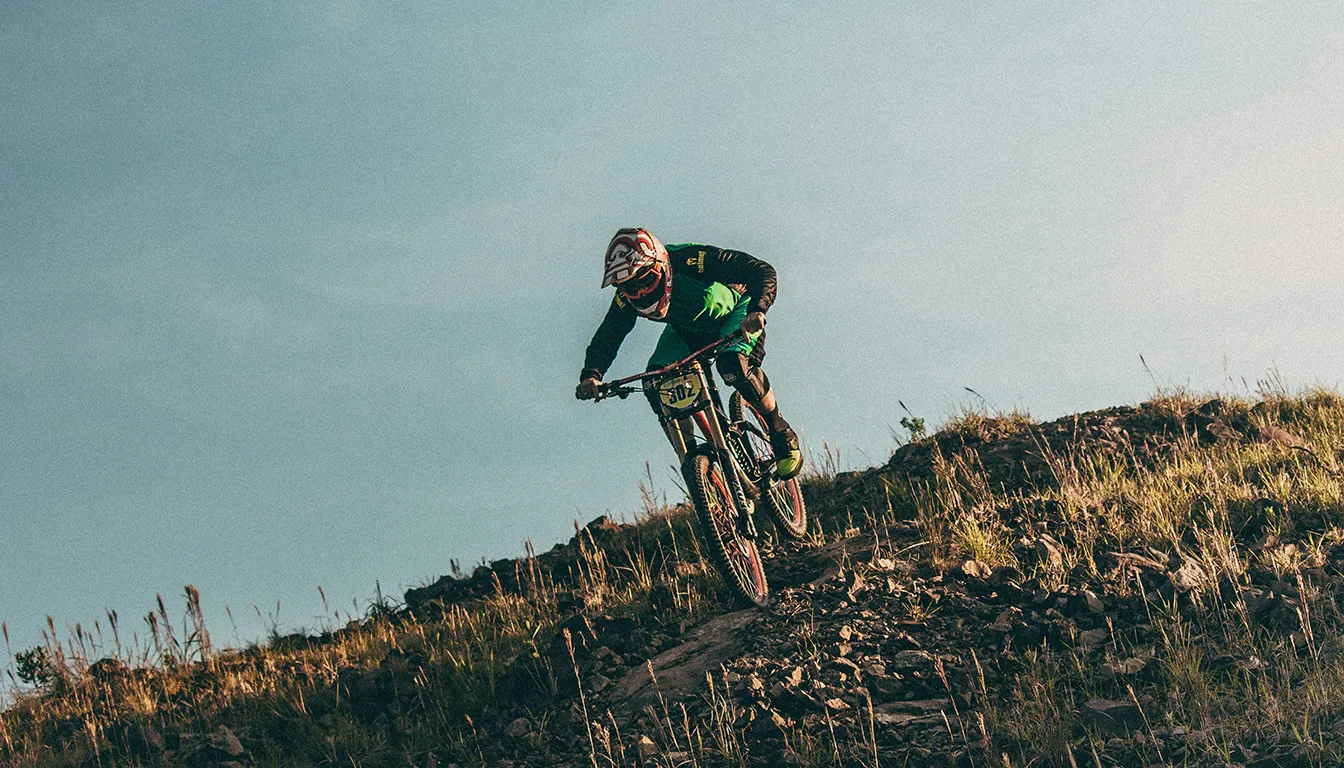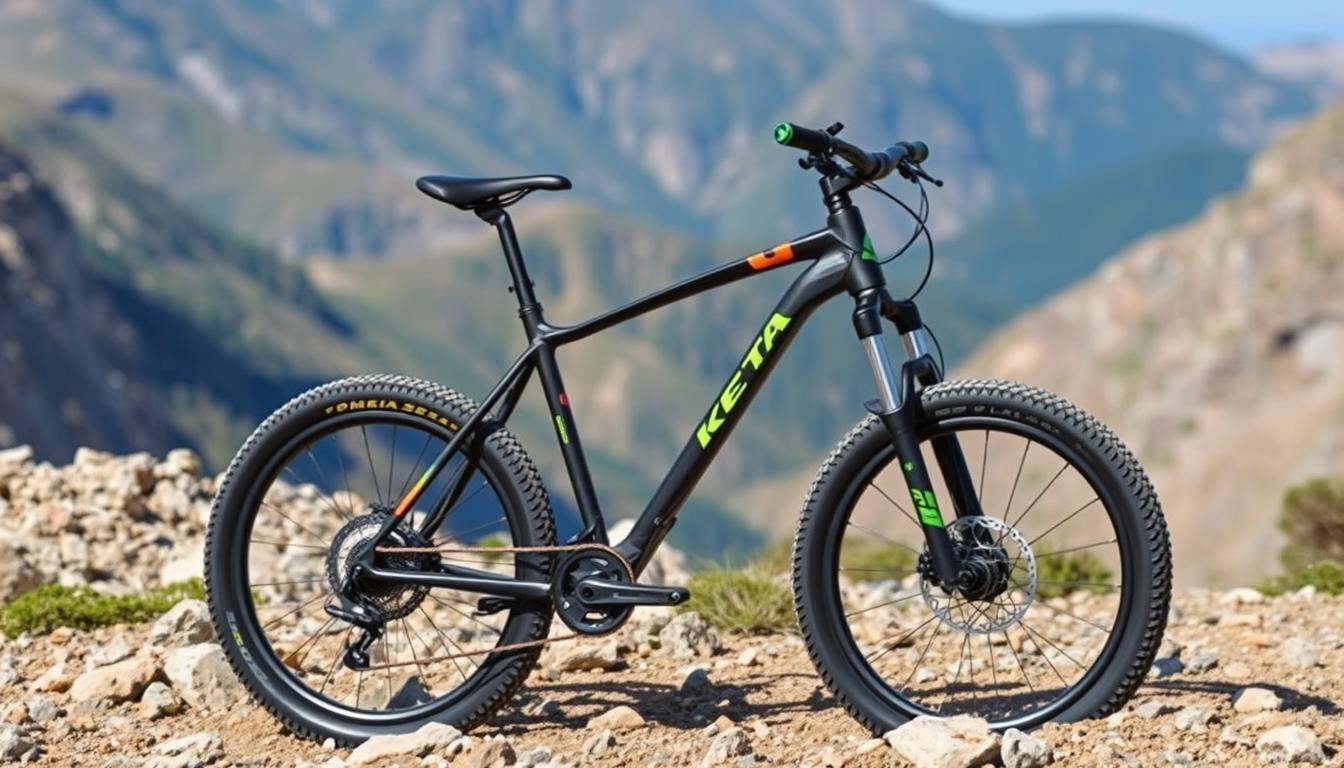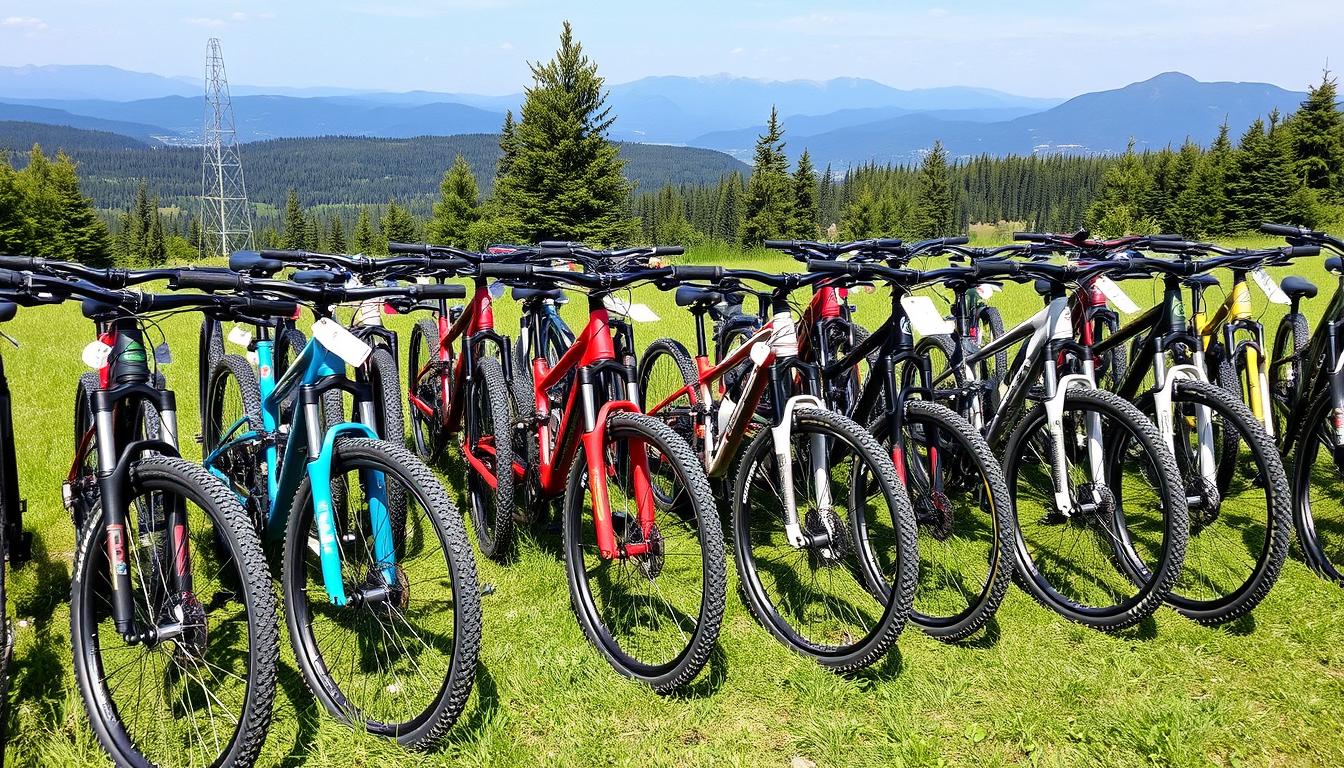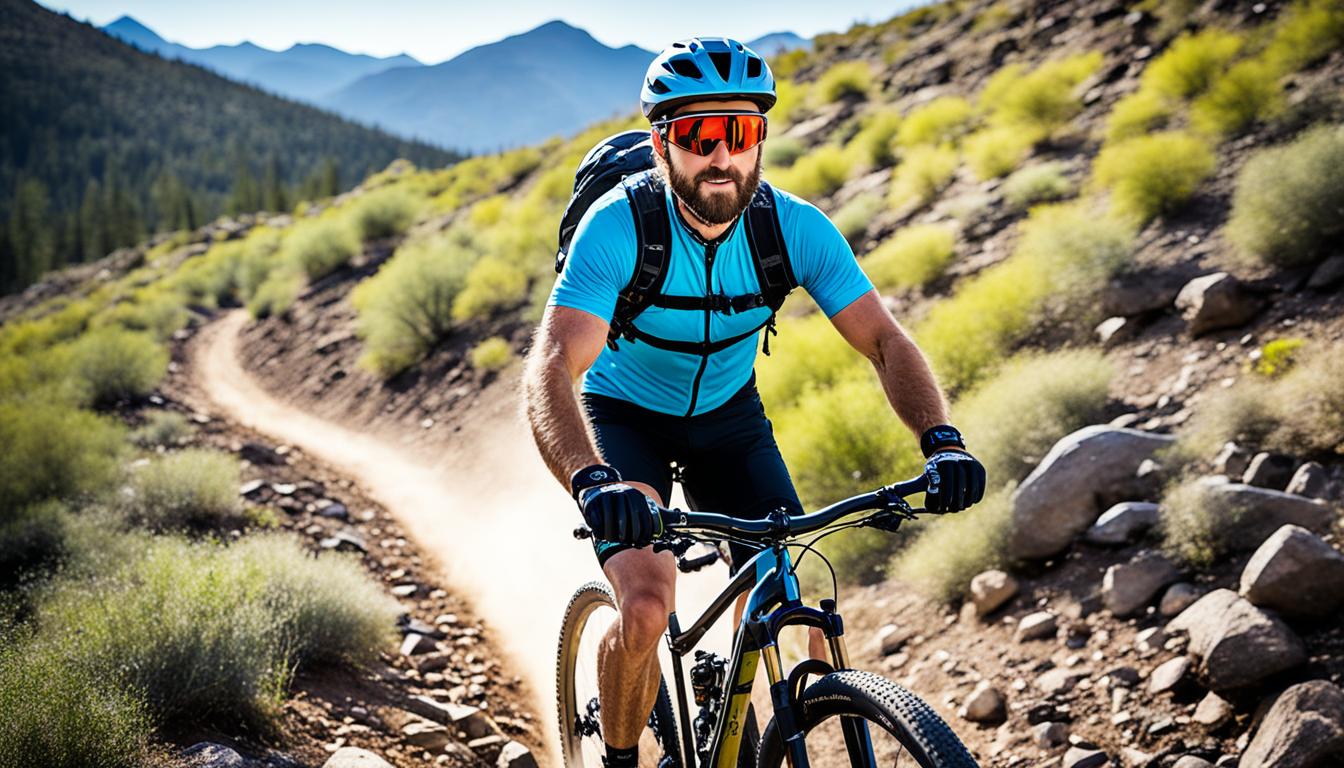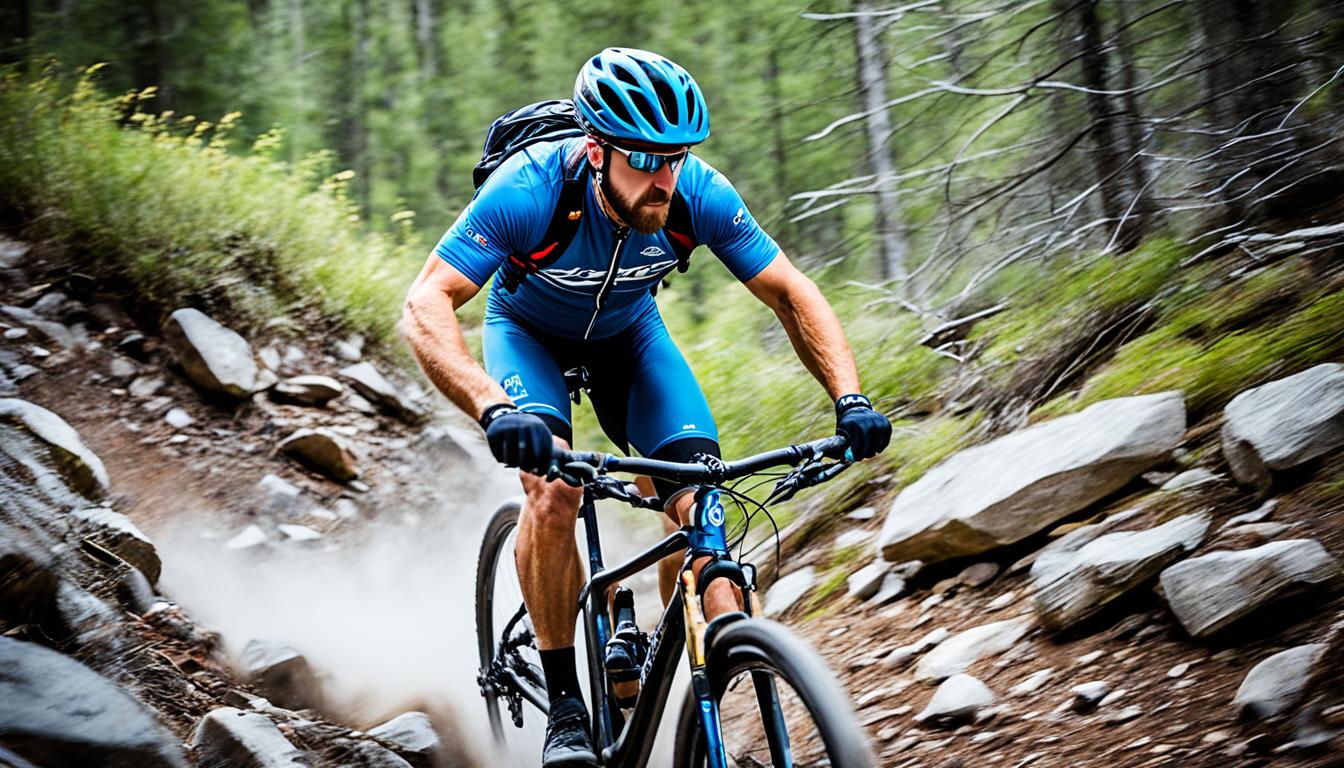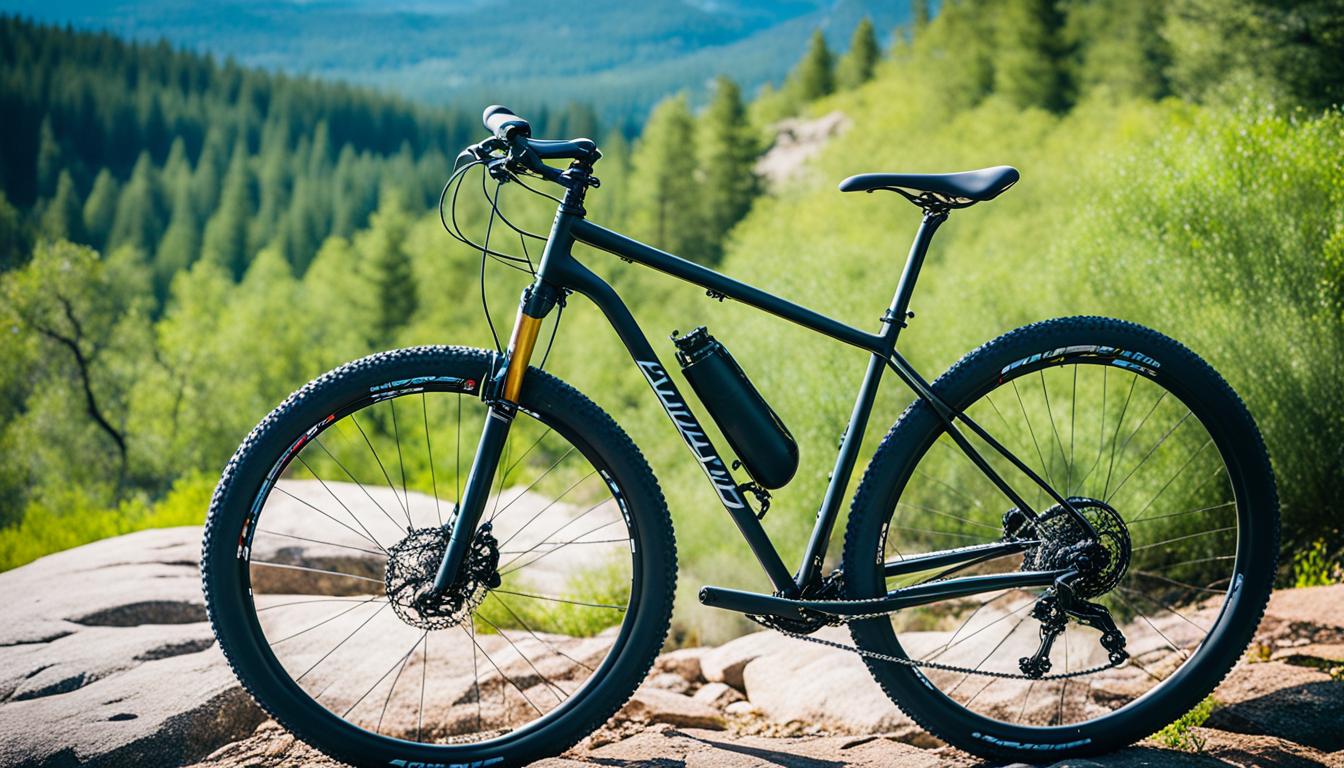Welcome to the thrilling world of single speed mountain biking! We’re here to show you the joys of riding a single speed bike. It’s where simplicity meets skill. Single speed bikes offer a unique experience that many bikers love. They push you to break your own records and improve basic biking skills.
Ever noticed how people in a group are drawn to single speed bikes? They’re not just curious; they find climbing hills easier with one gear. Learning to ride one can make you a better biker and boost your fitness. A single speed’s rigid design makes energy use more efficient, helping you speed up on tough paths.
Let’s dive into the key techniques and tips for single speed mountain biking. We’ll help make you a more skilled and focused rider.
The Basics of Single Speed Mountain Biking
Single speed mountain biking is unique, offering simplicity and efficiency. It helps riders gain confidence on tough terrains. Grasping single speed mechanics goes beyond not using gears. It changes how one faces obstacles on the trail.
Understanding Single Speed Mechanics
Single speed bikes have a simple design. This design cuts out complicated gear systems. It helps riders focus on their riding technique and keeping momentum. For new riders, it’s vital to learn single speed basics. They get good at keeping up speed, making quick choices, and dealing with terrain changes. These abilities are key to mastering mountain biking.
The Benefits of Riding a Single Speed
Riding a single speed has many benefits. Maintenance is easy—no need for constant brake or gear tuning. Just check your tires and chain. This simplicity means more trail time and less shop time.
- Improved fitness: Single speed biking builds strength and stamina.
- Cost-effectiveness: Single speed bikes are usually cheaper than those with multiple gears.
- Crash resistance: Fewer parts mean these bikes are sturdier in accidents.
- A fresh perspective: Familiar trails become new challenges.
- The zen-like experience: Enjoy peaceful rides on a quiet, smooth bike.
How to Ride a Single Speed Mountain Bike
Riding a single speed mountain bike offers unique challenges but rewarding experiences. To excel, understanding fundamental riding skills for a single speed is crucial. These skills enable riders to adjust and perform better across different terrains.
Key Techniques for Mastery
Mastering a single speed mountain bike means keeping your momentum. This is especially true for climbing, where every push on the pedal matters. Here are some bike riding tips to improve your ride:
- Pedalling Position: Try both standing and sitting to find what gives you better power and balance.
- Cadence Management: Aim for a steady cadence, especially uphill, to keep speed up without wearing yourself out.
- Weight Distribution: Move your weight wisely over slopes or obstacles for better control and stability.
Adjusting Your Riding Style
Adjusting your riding style is key with a single speed. Without gears, thoughtful changes can greatly enhance performance. Here are strategies to incorporate:
- Get to know the terrain and adjust your approach accordingly because no gears mean your power application changes.
- Move your body efficiently; for instance, a different posture is needed for descending to stay in control.
- Brake consistently to control your speed, especially downhill. It helps in navigating technical parts of the trail.
Many have found that single speed riding sharpens their handling skills. A large number of riders acknowledge this advantage, crediting the simple mechanics of their bikes. For more on the benefits of single-speed bikes and tips on converting geared bikes, see this informative guide.
Preparing for Your Ride
Gearing up for a mountain bike ride is crucial. Start by picking the right gear. This helps ensure safety and enjoyment on the trails. Don’t forget to pack essential items such as proper clothing, a hydration pack, and tools for bike maintenance.
Essential Gear and Equipment
The right gear significantly improves your ride. You should have:
- Protective clothing: Choose lightweight and breathable fabric for comfort.
- Helmet: It’s vital for keeping you safe.
- Hydration pack: Staying hydrated is key, especially on long rides.
- Multi-tool: Handy for quick bike repairs on the trail.
- Body armour: Adds extra protection on tough trails.
Before you set off, check your bike thoroughly. Jason Moeschler, a pro mountain biker, recommends a mechanic’s inspection for peace of mind.
Choosing the Right Trail
Choosing a suitable trail is important. Things to consider are:
- Terrain: Pick ones that match your ability. Beginners often find Cross-Country trails more suitable.
- Elevation gain: Opt for trails with climbs you can handle comfortably.
- Obstacles: Look at the obstacles present, like rock rolls or ramps.
Start with easier trails to gain confidence. For tips on selecting trails and preparing for your ride, read this comprehensive guide. Knowing your limits is key to a better biking experience and safety.
Climbing Techniques for Single Speed Bikes
Climbing with single speed bikes offers unique challenges and rewards. It requires understanding how to use momentum and balance bike weight. Whether you’re facing steep climbs or technical routes, these tips will improve your skill.
Maintaining Momentum on Steep Climbs
For single speed bikes, it’s crucial to build and keep momentum. There are several strategies to help:
- Starting Fast: Speed up before the climb to gain momentum. This makes climbing more efficient.
- Cadence Importance: A high cadence helps deliver power better. It makes climbing easier.
- Slalom Technique: Using a zig-zag path on climbs makes them easier. It can help you climb better.
Understanding Weight Distribution
How you distribute your weight is key on climbs. Here are some tips:
- Shifting Weight: Move your weight forward to keep balance. It prevents wheelies on steep climbs.
- Weight Optimization: Take off unneeded bike parts for lighter weight. Consider lighter parts for better performance.
- Body Position: Lower your chest to match your bike’s centre. This improves balance and control.
Small changes in how you move your hips can affect balance and power a lot. Standing up may be needed for very steep climbs to keep weight right. Using these techniques will make riding a single speed bike fun and effective.
Descending with a Single Speed
Descending on a single speed mountain bike calls for special skills for great control and fun. Riders face challenges because they can’t change gears, so knowing how to brake is key. We’ll look at the best ways to position your body and use brakes to confidently go downhill.
Body Position for Maximum Control
Getting your body position right is crucial for a smooth descent on a single speed bike. The right position improves balance and control, especially down steep hills. Here’s how to position your body effectively:
- Lean slightly forward to keep grip on the front wheel.
- Keep elbows bent and hands relaxed on the handlebars for more control.
- Lower your body by bending knees and getting low on the bike.
- Move your weight back when going down steep drops or over tricky parts.
Utilising Braking Techniques Effectively
Learning to brake correctly is vital for controlling speed on a descent. With no gears to slow down, cyclists need to brake smartly to keep a good pace and stay in control. Here are some braking tips:
- Use both front and rear brakes together to avoid skids.
- Apply brakes gently and smoothly, not suddenly, to control your speed.
- Be ready for terrain changes and brake accordingly.
- Get to know your bike’s brakes, so you feel confident going downhill.
To improve your downhill rides, mastering these techniques is a must. Knowing how to hold your body and brake right makes descending on a single speed bike safer and more fun.
Improving Endurance and Fitness
Getting better at single speed mountain biking means you’ve got to focus on your fitness. This boosts your leg power and helps you do better on the trails. Adding different exercises to your routine makes your endurance better. This gets you ready for the tougher rides ahead.
Exercises for Building Leg Strength
Making your legs stronger helps with going up hills and controlling your bike on downhills. Try adding these exercises to your training:
- Squats: They work your front and back thigh muscles and your glutes.
- Lunges: They help make your legs stronger evenly and increase core stability.
- Deadlifts: They target the back part of your body, very important for keeping your power while riding.
- Leg Press: It’s good for making your legs stronger, especially the front thigh muscles.
- Calf Raises: They are key for stronger calves, which helps you pedal better.
Doing these exercises often will greatly make your legs stronger. This is important for going up steep hills and improving how you ride. Mix these with cardio exercises for biking for the best outcomes.
Enhancing Cardio for Better Performance
For better endurance, you should do various cardio exercises. Some good ways to boost your heart’s performance include:
- Running: It’s great for increasing stamina and you can change how intense and long your runs are.
- Cycling: Longer rides help you slowly build endurance and get ready for single speed challenges.
- Interval training: This is doing short, very active periods mixed with resting times. It makes you faster and more enduring.
- Tempo rides: Doing steady rides that last between 30 and 90 minutes helps build your basic speed.
Doing these activities and keeping an eye on your heart rate hugely boosts endurance. Think about using heart rate monitors or power meters to plan your training well. By increasing how hard and long you ride, you’ll see your ability to handle different trails get much better.
Conclusion
We’ve looked into single speed biking and its benefits. Single speed mountain bikes need less upkeep and are cheaper. This article’s key points offer great insights for both new and seasoned riders. We also recapped how lighter bikes and simple gear systems make rides more fun.
Single-speed bikes are not just practical; they’re a doorway to mountain biking joys. They let riders enjoy nature more and biking becomes a purer form of cycling. These bikes are easier to speed up and steer, letting riders focus more on their environment.
Think about how mountain biking can change your outdoor adventures. Whether you prefer the simplicity of single-speed bikes or the versatility of multi-speed ones, each ride is a chance to connect with nature and push your limits. Now’s the time to embrace the thrill of mountain biking!
FAQ
What is a single speed mountain bike?
A single speed mountain bike has just one gear ratio. This makes the ride simpler by taking away gear shifting. It’s perfect for those who like simplicity and aim to boost their skills on different terrains.
What are the advantages of riding a single speed mountain bike?
Riding a single speed improves fitness and riding style. It also introduces the thrill of handling trails without shifting gears. Riders feel a closer connection to their bike and face landscapes with more confidence.
How do I maintain momentum on steep climbs with a single speed bike?
To keep up momentum on climbs, pedal consistently and don’t brake too much. Leverage your body weight for better traction and keep a steady rhythm. Staying relaxed and balanced also helps in climbing efficiently.
What essential gear should I bring for single speed mountain biking?
Bring the right mountain biking clothes, like those that wick sweat away, and a hydration pack. You’ll also need maintenance tools, a helmet for safety, gloves for better grip, and snacks to stay energized.
Are there specific exercises to improve my fitness for single speed mountain biking?
Yes, doing squats and lunges will boost your leg strength, vital for climbing hills. Adding cardio, like running or biking, improves endurance and performance on the trails.
How do I choose the right trail for my skill level?
Consider the trail’s terrain, elevation, and your experience when choosing. Pick trails that match your skill level for a fun and safe experience. This way, you can safely push yourself as you grow more skilled with your single speed bike.
What should I focus on while descending with a single speed mountain bike?
When going downhill, focus on your body position for better control. Manage your speed wisely and brake smoothly. This makes descending easier and more fun, while maintaining momentum.
How can I adjust my riding style for a single speed bike?
Adjust your riding style by focusing on your pedal strokes, especially the rhythm and how you distribute your weight. Switching between standing and sitting based on the terrain affects balance and power.
